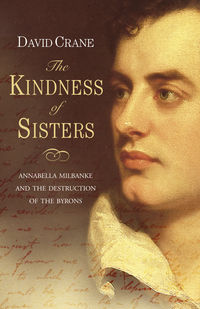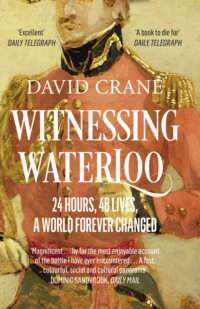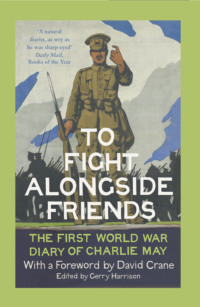
Полная версия
Lord Byron’s Jackal: A Life of Trelawny
The lonely and grand scenery that surrounded us so exactly harmonized with Shelley’s genius, that I could imagine his spirit soaring over us. The sea, with the islands of Gorgona, Capraja, and Elba, was before us; old battlemented watch-towers stretched along the coast, backed by the marble-crested Appenines glistening in the sun, picturesque from their diversified outlines, and not a human dwelling was in sight. As I thought of the delight Shelley felt in such scenes of loneliness and grandeur whilst living, I thought we were no better than a herd of wolves or a pack of wild dogs, in tearing out his battered and naked body from the pure yellow sand that lay so lightly over it, to drag him back to the light of day; but the dead have no voice, nor had I power to check the sacrilege – the work went on silently in the deep and unresisting sand, not a word was spoken, for the Italians have a touch of sentiment, and their feelings are easily excited into sympathy. Byron was silent and thoughtful. We were startled and drawn together by a dull hollow sound that followed the blow of a mattock; the iron had struck a skull, and the body was soon uncovered. Lime had been strewn on it; this or decomposition had the effect of staining it of a dark and ghastly indigo colour. Byron asked me to preserve the skull for him; but remembering that he had formerly used one as a drinking-cup, I was determined Shelley should not be so profaned. The limbs did not separate from the trunk, as in the case of Williams’s body, so that the corpse was removed entire into the furnace … After the fire was well kindled we repeated the ceremony of the previous day; and more wine was poured over Shelley’s dead body than he had consumed during his life. This with the oil and salt made the yellow flames glisten and quiver. The heat from the sun and fire was so intense that the atmosphere was tremulous and wavy. The corpse fell open and the heart was laid bare. The frontal bone of the skull, where it had been struck with the mattock, fell off; and, as the back of the head rested on the red-hot bottom bars of the furnace, the brains literally seethed, bubbled, and boiled as in a cauldron, for a very long time.
Byron could not face this scene, he withdrew to the beach and swam off to the ‘Bolivar’. Leigh Hunt remained in the carriage. The fire was so fierce as to produce a white heat on the iron, and to reduce its contents to grey ashes. The only portions that were not consumed were some fragments of bones, the jaw, and the skull; but what surprised us all was that the heart remained entire. In snatching this relic from the fiery furnace, my hand was severely burnt; and had anyone seen me do the act I should have been put into quarantine.15
In the long years ahead, Shelley’s funeral would come to seem the making of Trelawny, the beginning of his public ministry as high priest and interpreter of English Romanticism. During the short time that he had known Shelley and Byron he had certainly become an integral part of their Pisan world, but the truth is that it was his role at their deaths and not the friendship of a few brief months which gave him his apostolic authority over a generation infatuated with their memory.
In account after account over the next sixty years he would return to this summer of 1822 with ever new details, peddling scraps of history or bone with equal relish. Yet if his long-term strategy became one of ruthless self-promotion, in the short term Shelley’s death brought out a streak of selfless and generous kindness his earlier life had stifled. In the bleak and wearing months after the Don Juan went down, Trelawny almost single-handedly sustained the grieving widows, giving them not just unstinted emotional support but practical and financial help that earned their deep and genuine gratitude. ‘His whole conduct during his last stay here has impressed us all with an affectionate regard, and a perfect faith in the unalienable goodness of his heart,’16 Mary Shelley wrote to Jane Williams from Florence on 23 July 1823, shortly before her own departure for England where Jane had already gone. ‘It went to my heart to borrow the sum from him necessary to make up my journey,’ she wrote again only a week later, ‘but he behaved with so much quick generosity, that one was almost glad to put him to the proof, and witness the excellence of his heart.’17
Through the desolate winter of 1822–3 Trelawny came closer to Mary than at any time in their long relationship, but it was with another of Shelley’s circle that he formed during this time what is possibly the most enduring, if impenetrable, friendship of his life.
A curious compound of apparent opposites, of selfishness and generosity, common sense and fatuous silliness, of shrewd judgement and uncontrollable passion, of clinging dependence and brave and dogged self-sufficiency, Claire Clairmont is at once the most touching and exasperating member of Shelley’s and Byron’s world. She had been born in the spring of 1798 as the illegitimate child of a woman who went under the name of ‘Mrs Clairmont’, and at the age of three was taken with her brother Charles to Somers Town in London, where in the same year their mother met and married the widower of Mary Wollstonecraft, the great radical and political philosopher, William Godwin.
From the earliest age, Claire thus found herself in one of the most free-thinking and politically conscious households in England, the step-daughter of a famous writer and step-sister to another in the future Mary Shelley. As a child, too, she was raised and educated with the same care that was expended on the boys of the family, and she grew up with all the principles and beliefs that lay at the core of the Godwin ménage, as exuberantly and unapologetically a child of the revolutionary age as if she had indeed been Godwin and Mary Wollstonecraft’s natural daughter.
When Claire was fourteen her half-sister, Mary, fell in love with the young poet and disciple of Godwin, Percy Bysshe Shelley. Shelley was already a married man when he first met Mary, but two years later the couple eloped to France and took Claire with them, walking, riding and slumming their way across the French countryside until poverty and Mary’s pregnancy brought them back to England and reality.
It is hard to imagine what the sixteen-year-old girl thought she was doing with Mary and Shelley in France at this time, but if her teasing and subversive presence in their lives is still one of the unresolved mysteries of biography, there was odder yet to come. Within two years of their triangular elopement and still only seventeen, she eclipsed Mary’s conquest of Shelley with a married poet of her own, throwing herself at Lord Byron with a reckless and infatuated passion that his indolent and self-indulgent nature was unable to resist. ‘An utter stranger takes the liberty of addressing you,’ she wrote to him above the assumed name of E. Trefusis.
It may seem a strange assertion, but it is none the less true that I place my happiness in your hands … If a woman, whose reputation as yet remained unstained, if without either guardian or husband to control, she should throw herself on your mercy, if with a beating heart she should confess the love she has borne you many years … could you betray her, or would you be silent as the grave?18
If a whole life can ever be said to hinge on a single action or judgement, then Claire Clairmont’s unprovoked assault on Byron in the March of 1816 is it. In the wake of the scandalous collapse of his marriage Byron was certainly ready for a brief and loveless affair, but to Claire it was the most important moment of her life, a moment at once of complete fulfilment and self-destructive folly which she was to regret for sixty bitter years.
Had the affair ended there and then, however, Claire Clairmont’s history might well have been very different, but in that same summer of 1816, a mixture of her persistence and Byron’s weakness saw it revived on the shores of Lake Leman and in January 1817 she gave birth to his daughter. The following March the baby was christened Clara Allegra Byron, but other than giving the child his name the father was unmoved. Boredom with Claire had long turned to an uncharacteristically implacable dislike of what he called her ‘Bedlam behaviour’, and even when the following year he agreed to assume responsibility for his daughter, it was an arrangement from which the mother was ruthlessly excluded.
It was this unstable, passionate and generous woman, with a past and pedigree to match – the step-daughter of Godwin, the sister-in-law of Shelley and the ex-mistress of Byron – with whom Trelawny now fell violently in love. Claire was still only twenty-three when they first met at the house of the Williamses in February 1822, a gifted linguist and musician, dark haired, clever and attractive enough – whatever the evidence of Amelia Curran’s Rome portrait – to have inspired at least one brilliantly shallow lyric of homage from Byron.
In her journal Claire recorded this first meeting without comment, and yet even had she felt any reciprocal interest at this time, the sudden death from typhoid of her daughter Allegra in the convent where Byron had placed her was soon to eclipse all else. In the immediate aftermath of the news Claire seems to have behaved with a dignity and calm that surprised everyone, but the silence of her journal over the next five months is an eloquent measure of a grief which only grew with the years.
It was a grief, too, which no one around could ignore, an event about which no one could remain neutral, and Allegra’s death marks the first major split in the Pisan Circle that had gathered around Byron and Shelley, the first bitter issue over which those battle lines were drawn that were to hold their partisan shape way beyond the deaths of the main protagonists.
At a time of such drama and tension it is difficult to see Trelawny remaining indifferent, but there is no clue to the way his relationship with Claire developed until in a sense it was all over. In the wake of Allegra’s and Shelley’s deaths his kindness must have brought her closer in the same way it did Mary and Jane, and yet as Claire prepared over the summer of 1822 to leave Italy there is nothing in any surviving correspondence that could possibly suggest a crisis in their friendship, and still less the torrent of passionate letters from Trelawny that followed her into her long exile as a governess.
That crisis is cryptically marked in her journal. The last prosaic entry had been for 13 April, just six days before Allegra’s death. It resumes again on Friday 6 September 1822, with a simple note of the date and nothing else. Three years later, however, while Claire was living on the country estate of her employers at Islavsk, outside Moscow, another entry gives some hint of what that date had meant to her. ‘Tuesday August 25th. Septr. 6th.’ she recorded, using both calendars
Lovely weather. I think a great deal of past times to-day and above all of this day three years, but the sentiments of that time are most likely long ago, vanished into air. This is life. So five to nothing but toil and trouble – all its sweets are like the day whose anniversary this is – more transitory than a shade – yet it had been otherwise if Inwalert had been different and I might have been as happy as I am now wretched.19
In Trelawny’s letters over the autumn and winter of 1822–3, however, the crackling fallout of that day in September has left a less ambiguous trace. It is impossible to say with any certainty what happened when they met for the last time on the banks of the Arno, but the bond that it established and its devastating impact on Trelawny are beyond question. Over the next months he sent letter after letter to Claire in Vienna, violent and tender, demanding and conciliatory, histrionic and emotionally truthful by turn. ‘A gnarled tree may bear good fruit,’ he gnomically declared from the back of his horse in one undated letter soon after, ‘and a harsh nature may find good council …’
let us be firm and staunch friends we both want friends – you have lost in Shelley one worthy to be called so – I cannot fill his place – as who can – but you will not find me altogether unworthy the office. Linked thus together we may defy the fate that separates us for a time – with united hearts – what can separate us … In solitude silence or absence I think of your words – and can even make sacrifices to reason … 20
The last six lines of this letter have been scratched out by Claire, but enough of Trelawny’s correspondence remains uncensored to underline the Byronic tenor of his courtship. You ‘tortured me almost into convulsions,’ he told her in a letter written from Pisa when he realized she was irreparably lost to him, ‘have left me fetid, morbid, and broken hearted.’
Why have you thus plunged me into excruciating misery by deserting him that would – but bleed on in silence my heart – let not the cold and heatless mock thee with their triumphs.21
‘Your weak impress of Love was a figure Trenched in ice; which with an hour’s heat dissolved to water!’ he complained on 4 October,
you! you! torture me Claire, your cold, cruel heartless letter has driven me mad – it is ungenerous under the mask of love – to enact the part of a demon … you have had my heart, and gathered, and gathered my crudest, idlest most entangled surmises … I am hurt to the very soul. I am shamed and sick to death to be thus trampled on & despised, my heart is bruised … much as endurance has hardened me, I must give you the consolation of knowing – that you have inflicted on me an incurable wound which is festering & inflaming my blood.22
‘I have used no false colours,’ he again told her with more emotional than literal truth, ‘no hypocrisy – enacted no part.’
I have as dispassionately as I could – disclosed my feelings … I loved you the first day, – nay before I saw you, – you loathed and heaped on me contumely and neglect till we were about to separate – Clare I love you and do what you will – I shall remain deeply interested for you. I think you are right in withdrawing your fate from mine – my nature has been perverted by neglect and disappointment in those I loved – my disposition is unamiable. I am sullen, savage, suspicious & discontented – I can’t help it – you have sealed me so.23
Somewhere behind the grief, the mortification and the posturing at Claire’s abandonment, however, Trelawny probably knew, as he suggests here, that she was right to keep their two fives apart. There seems no need to question the intensity of his feelings for her, and yet it is difficult to resist the sense that it was her history as much as herself that attracted him, or that his love was something that could flourish more easily in absentia.
This was something Claire, despite her genuine and lasting fondness for him, also recognized. ‘I admire esteem and love him;’ she wrote to Mary Shelley eight years later, when experience had damped down those passions that had ruined her life,
some excellent qualities he possesses in a degree that is unsurpassed but then it is exactly in another direction from the centre of my impetus. He likes a turbid and troubled life; I a quiet one; he is full of fine feelings and has no principles; I am full of fine principles but never had a feeling (in my life). He receives (every) all his impressions through his heart; I through my head. Che vuol? Le moyen de se rencontrer when one is bound for the North Pole and the other for the South.24
It is characteristic of Trelawny that at the same time as he was berating Claire for her inconstancy, he was consoling himself with other affairs, but without her or the circle that had gathered round Shelley and Mary, his life threatened to lapse back into the brainless rhythms of former days. On 22 November, he wrote half-heartedly to her of his plans. Byron’s boat, the Bolivar, which he had skippered, was laid up, but he had thoughts of shooting with Roberts and then sailing among the islands in the spring in the salvaged Don Juan. It was, he told her ‘a weary and wretched existence without ties,’ his life little more than ‘dying piecemeal’.25
Almost in spite of himself, however, there was a buoyancy about Trelawny that would always assert itself, and in Shelley’s death, too, he still had unfinished business. In January 1823, Shelley’s ashes had been deposited in the Protestant Cemetery at Rome, but when Trelawny visited the place in the spring he found them in a public grave, ‘mingled in a heap with five or six common vagabonds’.26
His distress at this indignity was certainly genuine, and yet a letter of Keats’s friend, Joseph Severn – complaining of Trelawny’s cavalier attitude to a memorial design Severn had done for the tomb – underlines just how far down the road to recovery he had come:
There is a mad chap come here – whose name is Trelawny. I do not know what to make of him, further than his queer, and, I was near saying, shabby behaviour to me. He comes on the friend of Shelley, great, glowing, and rich in romance. Of course I showed all my paint-pot politeness to him, to the very brim … I made the drawing, which cost us some trouble, yet after expressing the greatest liking for it, this pair of Mustachios has shirked off from it, without giving us the yea or no – without even the why or wherefore. – I was sorry at this most on Mr Gotts account, but I ought to have seen that this Lord Byron’s jackal was rather weak in all the points I could judge, though strong enough in stiletto’s. We have not had any open rupture, nor shall we, for I have no doubt that this ‘cockney corsair’ fancies he has greatly obliged us by all this trouble we have had. But tell me who is this odd fish? They talk of him here as a camelion who went mad on reading Ld. Byron’s ‘Corsair’.27
With the help of Severn, Trelawny had Shelley’s ashes disinterred and reburied in a ‘beautiful and lonely plot’28 near the pyramid of Caius Cestius. He added an inscription from The Tempest to Leigh Hunt’s simple ‘Cor Cordium’, and planted the grave with ‘six young cypresses and four laurels’.29 In a gesture which, in 1823, must have had more to do with a clinging sense of identification than inspired prescience, he then had his own grave dug next to that of Shelley – ‘so that when I die,’ as he reported back to Mary in a burst of necrophiliac chumminess,
there is only to lift up the coverlet and role me into its – you may he on the other side or I will share my narrow bed with you if you like.30
But if Shelley was gone Byron was still left, and for all the talk of death and world-weariness, the sniff of celebrity Trelawny had enjoyed in Pisa had been too intoxicating for him to face oblivion now with any equanimity. Throughout his life Trelawny would always ride the shifting thermals of their literary fame with effortless ease, but in truth it had always been the ‘sun’ rather than the ‘glow-worm’ that had warmed his youthful imagination into life, and it was to Byron now that he turned in search of a new role.
He was fortunate, too, in his timing, as events in both his and Byron’s lives now freed them from the chains of their Italian idleness. Trelawny was still writing long letters to Claire, but the first intensity of his attachment had cooled to something more honest, more in keeping with what they both wanted and needed of their friendship. In a letter written to her from Rome in April 1823, he told her that she had misunderstood his meaning, that he had never intended her staying with him. The following month he was more explict. ‘Now to proceed to your most urgent questions, which I have hitherto avoided,’ he wrote in reply to a lost letter:
As to my fortune – my income is reduced to about £500 a year – the woman I married having bankrupted me in fortune as well as happiness. If I outlive two or three relations – I shall, however, retrieve in some measure my fortunes – so you see, dear Clare how thoughtless and vain was my idea of our living together: as Keats says
‘Love in a hut, with water and a crust,
Is – Love, forgive us! cinders, ashes, dust;’
Poverty and difficulties have not – or ever will – teach me prudence or make me like Michael Cassio a great Arithmetician – all my calculations go to the devil – in anything that appeals to my heart – and this kind of prodigality has kept me in troubled water all my days: as to my habits – no Hermit’s simpler – my expenses are within even the limits of my beggarly means – but who can have gone through such varieties of life as I have – and not have formed a variety of ties with the poor and unfortunate; – I am so shackled with these that I do not think I have even a right to form a connection which would affect them – what abject slaves are us poor of fortune – enough of this hateful topic.
It is a source of great pleasure to me, your friendship – to be beloved – and Love – under whatever circumstances – is still happiness – the void in my affections is filled up – and though separate – I have lost that despairing dreary feeling of loneliness – I look forward with something of hope.
I am anxious to get to sea. Write to me here – and let me know your address – I do not like to importune you about writing. There are some pleasant women here, which induces me to go more into society than usual ….
Dear, I am not in the vein for writing –
Your unalterably
Attached
Edward.
May 15 1823
Florence31
At the time of this letter Trelawny probably had nothing fixed in mind when he spoke of the sea, but over the next months the unspoken possibility of joining Byron on an expedition took on a solid form. From the very start of their acquaintance there had always been desultory talk of travel in one direction or another, and when the idea of fighting for Greek independence suddenly became more than talk in the early summer of 1823, Trelawny was ready to join the crusade. ‘I wish Lord Byron was as sincere in his wish of going to Greece – as I am,’ he confided to Mary Shelley,
every one seems to think it a fit theatre for him … at all events tell him how willingly I will embark in the cause – and stake my all on the cast of the die – Liberty or nothing.32
By the early summer of 1823 Greece had been at war with Ottoman Turkey for just over two years, drawing men from all over Europe and America to a country that had long held a special place in the Western imagination. From the day in March 1751 when James Stuart and Nicholas Revett landed at the port of Athens to make the first accurate drawings of its ruins, travellers, painters, scholars, dilettanti, soldiers and architects had all made their way out to Greece, sketching and plundering its sites, charting its battlefields and searching the modern Greek’s physiognomy for some trace of its ancient lineaments, some link between the Greece which languished under Turkish rule and the land that had produced the poetry of Homer and the sculpture of the Acropolis.
It was in 1809 that the twenty-one-year-old Byron had first followed in this tradition, travelling with his long-suffering Cambridge friend John Cam Hobhouse through Ali Pasha’s Albania to Delphi, Athens, and on to Smyrna, Ephesus and Constantinople. In the years before this ‘pilgrimage’, Byron had gained a minor reputation in England as an aristocratic poetaster and satirist, but it was with the verses of ‘Childe Harold’, published on his return, that he not only made his own name but cast this old Philhellenism into the form that was to galvanize Romantic Europe into action.
Oh, thou, Parnassus! whom I now survey,
Not in the phrensy of a dreamer’s eye,
Not in the fabled landscape of a lay,
But soaring snow-clad through thy native sky,
In the wild pomp of mountain majesty!
What marvel if I thus essay to sing?
The humblest of the pilgrims passing by
Would gladly woo thine Echoes with his string,
Though from thy heights no more one Muse will wave her wing.
Fair Greece! sad relic of departed worth!
Immortal, though no more; though fallen, great!
Who now shall lead thy scatter’d children forth,
And long accustom’d bondage uncreate?
Not such thy sons who whilome did await,
The hopeless warriors of a willing doom,
In bleak Thermopylae’s sepulchral strait –









